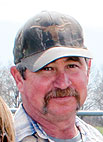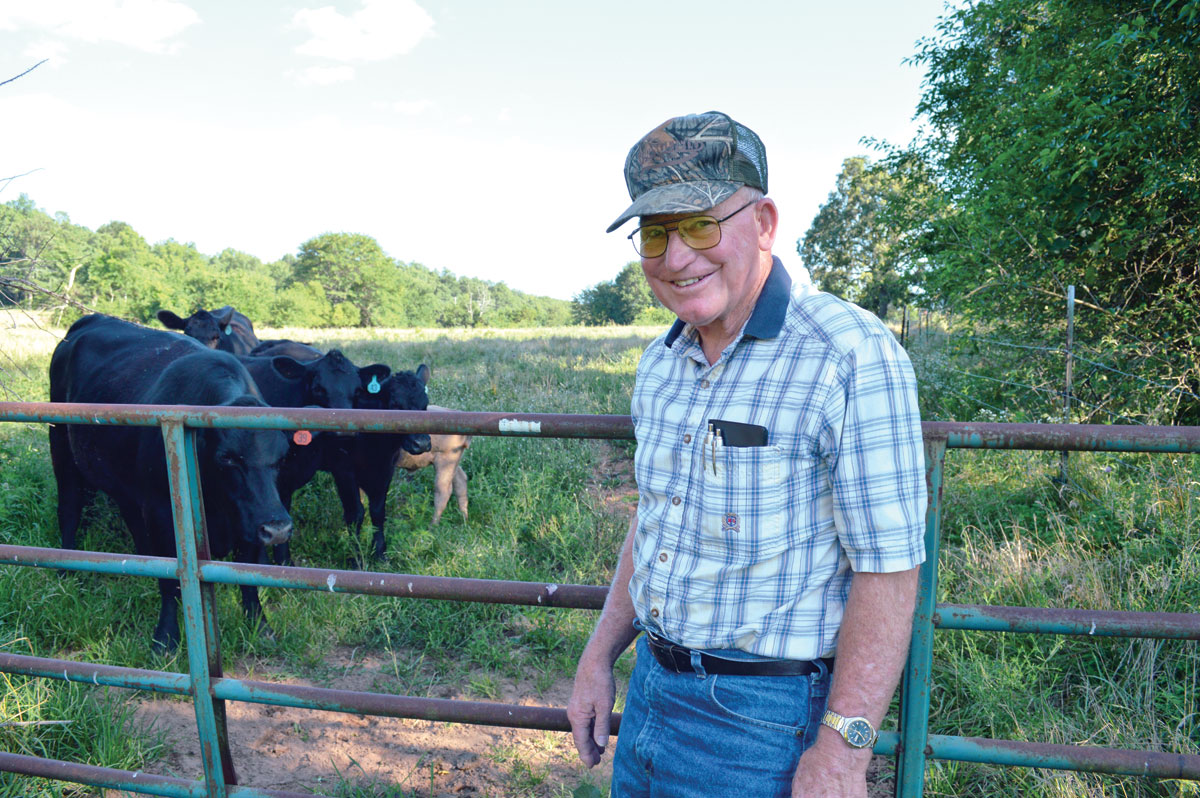 “I’ve always ranched, but for years I ranched for other people,” chuckled Ray Marchant of Howell County.
“I’ve always ranched, but for years I ranched for other people,” chuckled Ray Marchant of Howell County.
That’s how he explained his experience when he worked for Foster Farms raising their breeder turkeys. “We moved here from California when Ray retired,” added his wife, Marietta. “We traded in 10 acres there for 110 acres here and have recently added this 120-acre piece here in Pomona, Mo., to our farm.”
For eight years they’ve raised crossbred cattle on their farm near Lanton, Mo., in the southern portion of Howell County. “It was just about three years ago we got into the registered stock,” Ray said. “The boys were starting to look for steers for the fair and we wanted gentle cattle. We really like the registered Herefords but unfortunately when sold around here, they got docked because they were not black,” he said.
“So that’s when we learned about registered Black Herefords and bought our first homozygous Black Hereford bull. At that same time we purchased 20 registered cows and then the next year bought out a small herd from a long-time Hereford producer who was raising Herefords,” Ray explained. “I wanted to introduce new Hereford bloodlines into the Black Hereford bloodline by using my homozygous black bull.”
Black Herefords
Registered Black Herefords are a new breed with lots of age-old genetics. Herefords and Angus are two of the most generally recognized beef breeds. “The Angus breed is so old and over time they have developed genetic trouble because of the bloodlines,” explained Ray. “Hereford breeders researched and developed the best genetics of the Angus and bred them to quality Herefords to develop the breed.
“The American Black Hereford Association (ABHA) was established in Kansas in 1994 and the first calves were born and recorded in the ABHA registry in 1997,” Ray explained.
Now the Marchants have about 50 head of registered and commercial cattle between their two farms. “Currently we sell steers and cull animals through the local cattle barns, but we’re actually selling our registered animals right off the ranch,” he said.
The Future
Trying to keep heifers and increase herd numbers, the Marchants intend to use artificial insemination on their heifers this year. “I was familiar with AI techniques and have preg checked cows for years. Earlier this year, I attended an AI Training Course and look forward to using this to improve our genetics on our farm without having to purchase more bulls,” he said. “We have one bull and will continue to use him on our cows and for a clean-up breeder, and I’ll AI the heifers for the next three or four years. Then we’ll look to buy a new bull and get some more new genetics in our herd.”
Ranch Management
Ray is retired and Marietta works in town at a local bank, but the farm is still a family operation. “Our two sons, Jon, 14, and Jake, 13, are very much part of the farm,” Marietta explained. “They have chores they do before school and they go out after school and on the weekend and help Ray and I on the farm.”
In Lanton, their farm consists of about 70 acres of pasture land where they utilize rotational grazing. “I have used about 48,000 feet of hot wire and have the land in 2-acre pieces and I’m about ready to split those in half,” explained Ray.
“By using rotational grazing, the cows eat everything, even the weeds. Sometimes what is considered weeds are higher protein and better for the animals but they don’t eat it by choice. By not giving them the choice, they graze it all clean. And all the natural fertilizer is right where it needs to be,” he added.
Family
“We are proud to be working on the farm and raising cattle and knowing that we have something to leave the boys if they want it,” she smiled.
Jon and Jake both agreed. “I like working with my cows and my fair goats,” said Jake. Jon really enjoys working with the cattle as well. He has shown goats for 4 years and has even come away with Supreme Goat honors two years in a row.
“I’m happy to be working the farm with my family and raising Black Herefords – a good breed that I can stand behind and support completely,” Ray stated. “Black Herefords have taken the Herefords and helped them level the playing field with other black breeds.”







